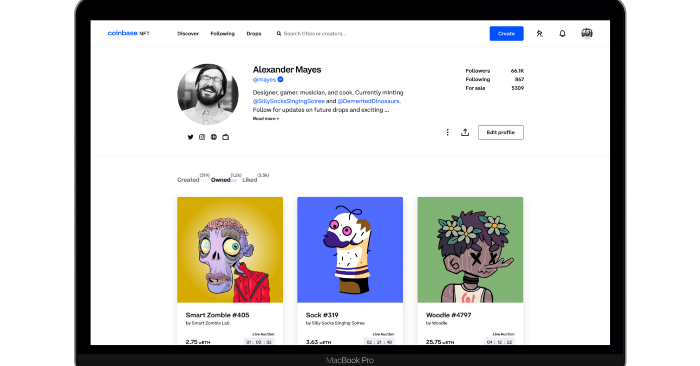Booklet Creation: Tips for Crafting a Unique and Informative Publication
Booklets are a popular tool for sharing information and ideas and offer an affordable and concise way to present information in a visually appealing and engaging manner. A well-crafted booklet with the Vista Create booklet maker at https://create.vista.com/create/booklet-maker/ can be...

Booklets are a popular tool for sharing information and ideas and offer an affordable and concise way to present information in a visually appealing and engaging manner. A well-crafted booklet with the Vista Create booklet maker at https://create.vista.com/create/booklet-maker/ can be an effective tool for educating, advertising, instructing, or promoting your business, product, or service.
Here are some tips to help you craft a unique and informative publication that stands out from the competition:
Define Your Purpose and Target Audience
When creating a booklet, it is crucial to define your goal and identify your target audience. What is your purpose? Is it meant to educate, promote, advertise, or instruct? Knowing these answers will help you create a booklet that is relevant and engaging for your target audience.
Identify your target audience by researching their age group, gender, interests, and preferences. This information will help you create content that appeals to them, ultimately leading to a more effective booklet.
Choose a Theme and Style
Once you’ve defined your purpose and audience, select a theme that reflects your booklet’s purpose and appeals to your target audience. For example, if your booklet is about self-improvement, your theme could be “Achieving Your Goals.”
The style of your booklet should also be consistent with the theme and purpose. Choose a font, color, and layout that complement your theme and are easy to read. Use images and illustrations that are relevant, high-quality, and visually appealing.
Organize Your Content
In order to create a booklet that is unified and useful, organizing your information is really necessary. Create divisions or chapters for your material, and then arrange them in a manner that makes sense. Make the material simpler to read by breaking it up using headings, subheadings, and bullet points where appropriate.
Make sure to include an introduction while you are arranging your material. This introduction should include a summary of your objective and the scope of your project. You may also want to include a conclusion that includes a call to action in addition to a summary of the main themes.

Write Clear and Concise Copy
The copy in your booklet should be clear, concise, and easy to understand. Avoid using technical jargon, complex sentences, and lengthy paragraphs. Use simple language and short sentences to get your message across effectively.
When writing your copy, keep in mind your target audience and their level of knowledge and understanding. Use examples, anecdotes, and case studies to illustrate your points and make them more relatable.
Proofread and Edit
Before printing and distributing your booklet, it’s essential to proofread and edit it thoroughly. Check for grammar, spelling, and punctuation errors. Also, make sure the text is consistent in style, tone, and voice.
Ask someone else to read your booklet and provide feedback. Make sure the feedback is constructive and addresses any issues or concerns. Use the feedback to improve your booklet and make it more informative and engaging.
Promote Your Booklet
Once your booklet is ready, it’s time to promote it. Choose a distribution method that is appropriate for your target audience. You can distribute it online, via email, or in person.
Create a landing page or a website that showcases your booklet and provides information on how to obtain it. Use social media to promote your booklet and build buzz around it. You can also partner with other businesses or organizations to distribute your booklet.
Leverage Online Resources to Create Unique and Engaging Content
Using online resources can be an effective way to create unique, creative, and engaging content. You can find a wide range of images, illustrations, videos, and audio files on the web that will help you bring your messages to life.
Also, online communities such as Reddit and Twitter offer valuable insight into topics that are trending in your target audience’s sphere. Taking the time to research these topics and curate relevant content will make your booklet more relevant to readers.
Redesign to Keep Readers Engaged
It is important to keep your booklet fresh and engaging with periodic redesigns. Ensure that all photos, text fonts, colors, and layout elements are up-to-date with current trends. For example, if you are using infographics or diagrams as part of your design, use modern tools instead of outdated methods like MS Excel or PowerPoint slides.
Incorporate Interactive Elements
Adding interactive elements to your booklet can enhance reader engagement and make the content more memorable. Consider incorporating elements such as quizzes, surveys, or interactive infographics to encourage reader participation and provide a more immersive experience.
Interactive quizzes can be used to test the reader’s knowledge of the topic or reinforce key points in the booklet. Surveys allow readers to provide feedback and share their thoughts, giving you valuable insights for future improvements. Interactive infographics, on the other hand, can provide a visually appealing way to present complex data or information.
When designing interactive elements, ensure they are intuitive and easy to use. Provide clear instructions and make the interactive features accessible across different devices and platforms. By incorporating these interactive elements, you can create a booklet that not only informs but also actively engages your readers.
Include Compelling Case Studies
Including real-life case studies can add credibility and practical relevance to your booklet. Case studies provide concrete examples of how your product, service, or ideas have been successfully implemented and can inspire readers to take action.
When selecting case studies, choose those that closely align with your target audience’s interests or challenges. Highlight the problem or situation faced by the individual or organization, the solutions implemented, and the positive outcomes achieved. Use compelling storytelling techniques to make the case study relatable and engaging.
In addition to showcasing successful outcomes, don’t shy away from discussing challenges or obstacles encountered along the way. By sharing both the successes and the lessons learned, you can provide a balanced perspective and give your readers a realistic understanding of what they can expect.
Conclusion
As you can see, creating a unique and informative booklet does not have to be a daunting task. By following these tips, you can create a booklet that stands out, captures your target audience’s interest, and communicates your message effectively. Define your purpose and target audience, choose a theme and style, organize your content, write clear and concise copy, proofread and edit, and promote your booklet effectively to maximize its impact.
![]()
Deanna Ritchie
Managing Editor at ReadWrite
Deanna is the Managing Editor at ReadWrite. Previously she worked as the Editor in Chief for Startup Grind and has over 20+ years of experience in content management and content development.

 Koichiko
Koichiko 































